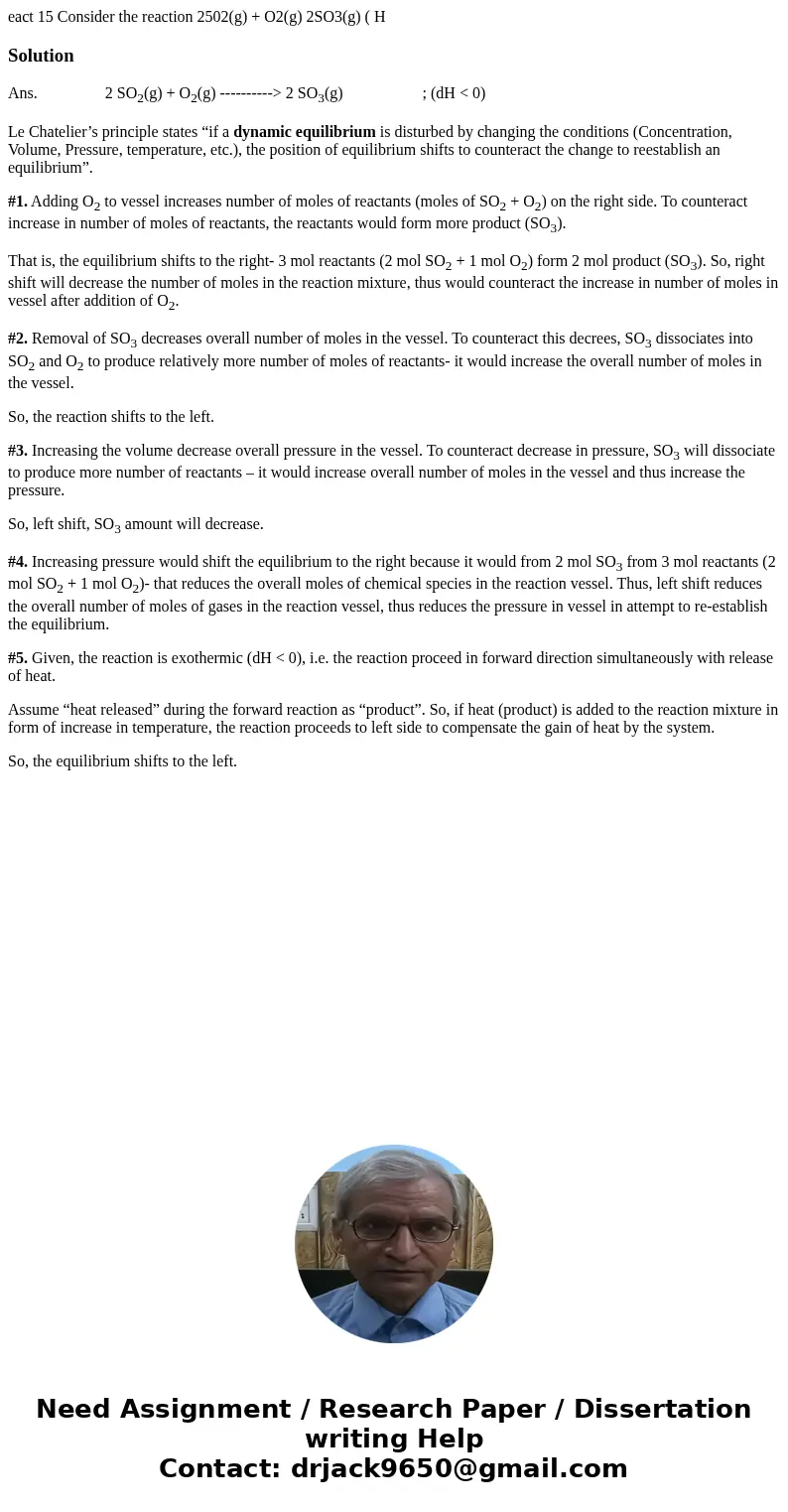eact 15 Consider the reaction 2502g O2g 2SO3g H SolutionAn
Solution
Ans. 2 SO2(g) + O2(g) ----------> 2 SO3(g) ; (dH < 0)
Le Chatelier’s principle states “if a dynamic equilibrium is disturbed by changing the conditions (Concentration, Volume, Pressure, temperature, etc.), the position of equilibrium shifts to counteract the change to reestablish an equilibrium”.
#1. Adding O2 to vessel increases number of moles of reactants (moles of SO2 + O2) on the right side. To counteract increase in number of moles of reactants, the reactants would form more product (SO3).
That is, the equilibrium shifts to the right- 3 mol reactants (2 mol SO2 + 1 mol O2) form 2 mol product (SO3). So, right shift will decrease the number of moles in the reaction mixture, thus would counteract the increase in number of moles in vessel after addition of O2.
#2. Removal of SO3 decreases overall number of moles in the vessel. To counteract this decrees, SO3 dissociates into SO2 and O2 to produce relatively more number of moles of reactants- it would increase the overall number of moles in the vessel.
So, the reaction shifts to the left.
#3. Increasing the volume decrease overall pressure in the vessel. To counteract decrease in pressure, SO3 will dissociate to produce more number of reactants – it would increase overall number of moles in the vessel and thus increase the pressure.
So, left shift, SO3 amount will decrease.
#4. Increasing pressure would shift the equilibrium to the right because it would from 2 mol SO3 from 3 mol reactants (2 mol SO2 + 1 mol O2)- that reduces the overall moles of chemical species in the reaction vessel. Thus, left shift reduces the overall number of moles of gases in the reaction vessel, thus reduces the pressure in vessel in attempt to re-establish the equilibrium.
#5. Given, the reaction is exothermic (dH < 0), i.e. the reaction proceed in forward direction simultaneously with release of heat.
Assume “heat released” during the forward reaction as “product”. So, if heat (product) is added to the reaction mixture in form of increase in temperature, the reaction proceeds to left side to compensate the gain of heat by the system.
So, the equilibrium shifts to the left.

 Homework Sourse
Homework Sourse